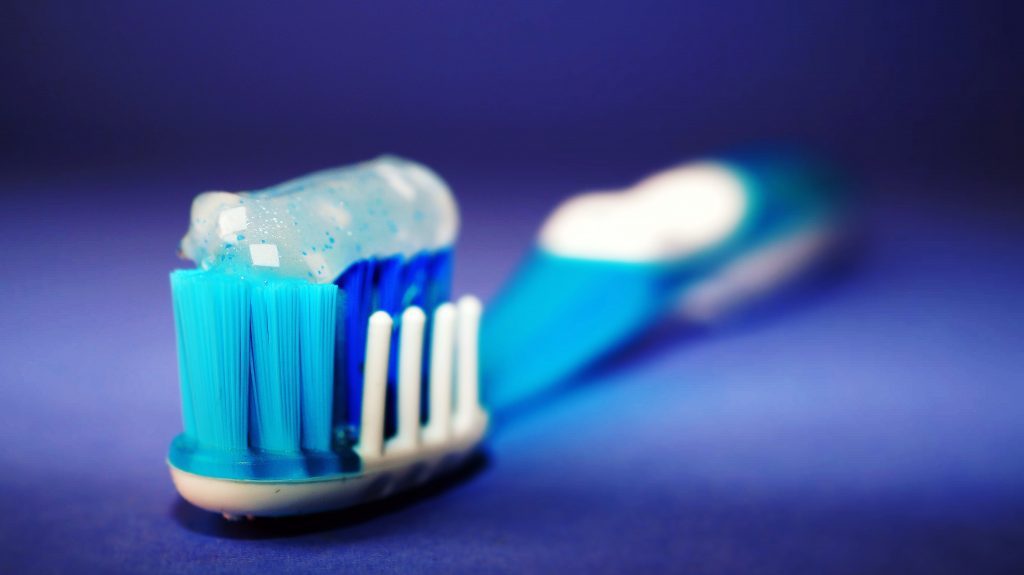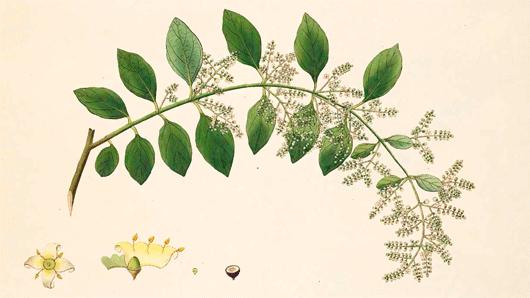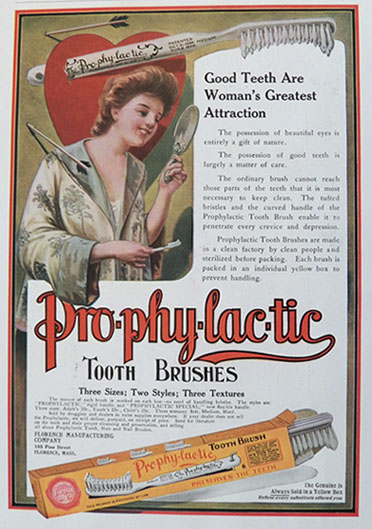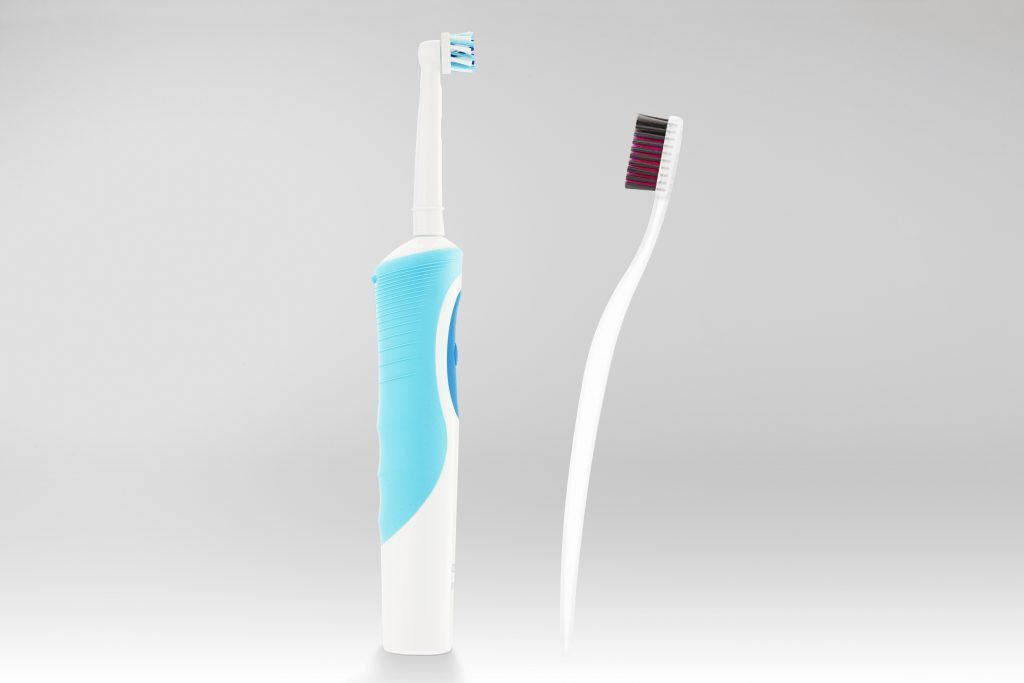A Toothbrush History

We all know the toothbrush. It is handy and compact, capable of reaching to the smallest areas of your mouth. Though toothbrushes have evolved from simple designs to self-rotating and battery operated ones, the fundamentals of brushing haven’t changed since the first toothbrush was invented by the Egyptians and Babylonians. Following is a brief history of this essential component for maintaining your oral health.
Timeline from 3500 BC – Present

3500 BC – In the early civilization, Egyptians and Babylonians were the first to develop the concept of brushing their teeth. They would do this by chewing Miswak from Salvadora Persica branches. Salvadora persica is a small shrub with a warped trunk, and usually grows more than just one foot in diameter. It devours a pleasant fragrance of cress or mustard and has a warm and pungent taste.[1] Moreover, it contains antiseptic and healing properties. Egyptians and Babylonians would chew the end of the tiny branches until fibers of the wood separate. This formed a brush that they used to brush their teeth. The other end was kept pointed to pick out food that stuck between the teeth, similar to how we use a toothpick today.
15th-16th Century – In the 15th century, the ancient Chinese invented the "first natural toothbrush with bristles" by using hairs from pig necks. The hairs that served as bristle were hard and attached to a handle made of bone or bamboo. When the Chinese introduced this design to the European continent, the European adapted the concept but with the use of horse hair or feather which is a softer preference. [2]
1780 – The first mass-produced toothbrush was designed by William Addis while he was imprisoned in London for rioting. He drilled small holes into cattle bone, and tied and glued bunches of swine fibers through the holes. After serving his sentence, he founded the “Wisdom Toothbrushes” which produced his invention into a massive scale. [3]

1844 - 1888 – Florence Manufacturing Company was established in Massachusetts in 1866 It was one of the first American toothbrush factories. When New York dentist Dr. Meyer L. Rhein patented the design and trademark of the popular “Prophy-lac-tic toothbrush” in 1888, the company began to mass produce it. [4] The toothbrush has three rows of serrated bristles with a longer tuft, it has a concave head with a handle that embossed a distinct number or symbol that helps the family member to distinguish their brushes.
1939 – As technology improves, the first electric toothbrush was invented in Switzerland.
1940 – Nylon toothbrush became very popular in the US when the United States Army soldiers returned from the hard-fought battle of World War II and brought home the habit of brushing their teeth.
1960 – It wasn’t until 1960 when the first electric toothbrush was introduced named Brodoxent to the market. [5]

Today, both manual and electric toothbrushes are available in various shapes, sizes, and hardness of the bristles. However, the basic need to brush the teeth has not changed since the ancient times of our Egyptians and Babylonians ancestors, the aim is to achieve good oral hygiene through the principle of cleaning and brushing. Two full minutes twice a day is the recommended time to spend brushing your teeth. It is also important to visit your dentist at least twice a year to help you keep a healthy mouth. Your dentist can recommend the proper toothbrush and brushing technique for you, so don't forget to visit Energetic Smile for your dental appointment! Let us help you achieve the healthiest teeth possible!
References:
- Almas AK & Almas K. Miswak (Salvadora persica chewing stick): the natural toothbrush revisited. (March 2014). Retrieved from https://www.ncbi.nlm.nih.gov/pubmed/24979958 (Accessed June 4, 2018)
- History of Toothbrushes And Toothpastes. (2006 June 12). Retrieved from https://www.colgate.com/en-us/oral-health/basics/brushing-and-flossing/history-of-toothbrushes-and-toothpastes (Accessed June 4, 2018)
- Prison, Suicide, & the Cold-Climate Hog (the sordid history of the toothbrush). Retrieved from http://museumofeverydaylife.org/exhibitions-collections/previous-exhibitions/toothbrush-from-twig-to-bristle-in-all-its-expedient-beauty/a-visual-history-of-the-toothbrush (Accessed June 4, 2018)
- Different Strokes for Different Folks: A History of the Toothbrush. Retrieved from http://www.virtualdentalmuseum.org/exhibits/different-strokes-different-folks-history-toothbrush/5/ (Accessed June 4, 2018)
- THE FIRST ELECTRIC TOOTHBRUSH, THE BROXODENT. Retrieved from http://doctor-mayer.com/the-first-electric-toothbrush-the-broxodent-2/ (Accessed June 4, 2018)
Written by Luisa Nacpil, RN
FAQ:
Q: What causes dry mouth?
A: There are several causes of dry mouth. Dry mouth can be caused by many medications, especially medications for high blood pressure or for diabetes. Dry mouth is also linked with aging. If your dry mouth is medication-induced, do not stop taking your medication without consulting with your physician.
Q: Why is my dry mouth worse at night?
A: Nighttime dry mouth is very common, especially among people who breathe out of their mouths when they sleep. In addition, those who use devices for sleep apnea, like a CPAP machine, often experience more severe dry mouth.



